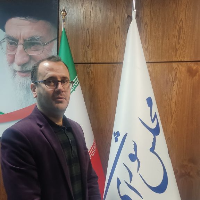Theoretical Synthesis of Iran’s Foreign Policy: The Case of Iran–China Comprehensive Strategic Partnership
In humanities, especially within the field of international relations, the application of theory to the analysis of events or phenomena in foreign policy and the international system is widely recognized as a salient approach. The application of theories allows us to gain a more profound understanding of the actions and reactions of countries’ foreign policies in the international system. In this line, the present study aimed to develop a model to gain a better understanding of Iran–China relations. The research sought a clearer insight into Iran–China comprehensive strategic partnership by employing a set of theories at the levels of international system, foreign policy, and domestic scene of policy formulation and decision-making. At the level of international system, it is necessary to consider the convergence between Iran and China in the context of US-led Western hegemony and counter-hegemony. At the level of foreign policy, it is crucial to consider cognitive approaches in foreign policy analysis. At the domestic level, one must take into account Iran’s prevailing economic circumstances and its challenges stemming from the US- imposed sanctions, which have prompted the Look to the East policy. China also seeks to export the surplus of its production and advance the Chinese model through partnerships. Delving into these issues, the present article investigated both theoretical considerations as well as various dimensions of Iran–China relations in practice.
Literature Review:
Rekabian et al. (2021) assert that Iran and China have actively pursued closer cooperation in regional and international organizations as a countermeasure against Western interventions. Shafiei (2022) posits that China’s comprehensive strategic partnership with Iran is primarily motivated by its own strategic objectives, while Iran engages extensively with China out of its specific needs and requirements. Corneliussen (2020) suggests that the Iran–China agreement has the potential to reshape the strategic and geopolitical dynamics in the Middle East. Figueroa (2022) highlights that Western sanctions stand as the primary hurdle to the realization of the 25-Year Iran–China Agreement and the enhancement of economic ties between the two countries. Scita (2022) argues that Washington is actively attempting to manage the contradictions arising from these roles through continuous mediation efforts. According to Loft et al. (2022), China is actively pursuing control over critical technological and industrial sectors, essential infrastructure, strategic resources, and supply chains.
The present study used a descriptive method to offer an analysis of Iran–China partnership.
The approach taken by Iran and China in establishing their comprehensive strategic partnership can be seen as a form of convergence between the two countries. China, in particular, seeks to advance its own strategic goals through these partnerships. It is also important to recognize that there are shared identity constructs between Iran and China, which can be characterized as the power of ideas evolving within the realist framework in the international system. In addition, this partnership has emerged from a nuanced understanding and recognition of the geopolitical landscape, especially within the context of the Islamic Republic of Iran. Iran is pursuing its first significant international partnership and agreement in the last century. Beyond addressing domestic needs and fulfilling economic, political, and military requirements, the Iran–China agreement is rooted in a strategic grasp of counter-hegemony as a pivotal factor in forging such agreements.
To gain a deeper insight into the Iran-China comprehensive strategic partnership, it is essential to explore various aspects and variables, ranging from domestic factors to the perceptions of their leaders, decision-makers, and policymakers, and to the dynamics of the international system. Comprehending and recognizing the positions held by the leaders of both nations within the international arena can facilitate the identification of national interests, commonalities, differences, and potential conflicts. Therefore, to enhance our understanding of the comprehensive strategic partnership between Iran and China requires an analysis of both domestic and foreign factors and variables. This approach offers valuable insights into the rationale and strategies that underlie the Iran-China partnership. The partnership is shaped not only by domestic and international circumstances but also by the perceptions of decision-makers and authorities in each country. Moreover, the resistance to a third party, such as the US, can exert a significant influence. All of these factors lead to a realist perspective in the international arena, which can contribute to more informed and effective decision-making processes for both countries involved in the comprehensive strategic partnership.
-
Analyzing the Basic Economic and Political Capacity of Iran in a Comprehensive Strategic Partnership with China
, Arsalan Ghorbani Sheikhneshin *
A Quarterly Journal World Politics, -
Explaining the evolution of the concept of security and its international consequences
*, Maryam Ahmadpour, Shirin Haddad Zand
Scientific Journal on Culture of Diplomacy Studies, -
Analysis of coercive diplomacy of Obama, Trump and Biden towards Iran
*
Scientific Journal on Culture of Diplomacy Studies, -
Identity and ideological confrontation between Saudi Arabia and Iran in the study of Yemen
Hanieh Karimi *, Mohammad Vali Modarres,
Journal of Political Strategy,



